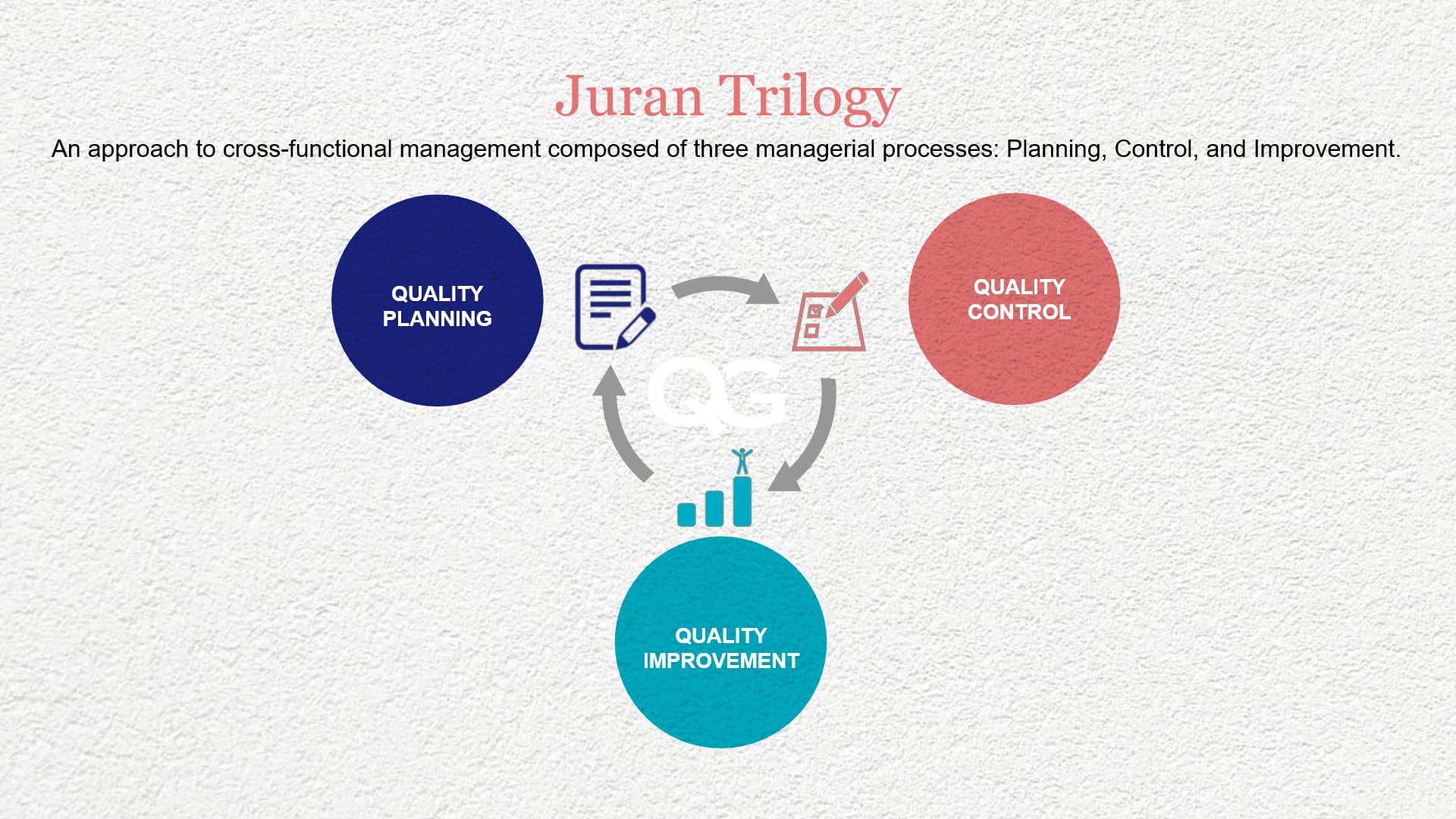Juran’s Quality Trilogy: A Comprehensive Guide

Juran’s Quality Trilogy is a renowned framework that has shaped the landscape of quality management. Developed by Dr. Joseph M. Juran, a key figure in the development of quality management practices, the trilogy emphasizes three managerial processes: quality planning, quality control, and quality improvement. This structured approach helps organizations achieve high levels of quality and operational excellence.
The Components of Juran's Quality Trilogy
1. Quality Planning
The first phase of the trilogy, quality planning, sets the foundation for meeting customer expectations. It involves defining who the customers are, determining their needs, and developing product features that respond to those needs. The key activities in this phase include:
- Establish Quality Goals: Determine what customers need and define these needs as quality goals.
- Identify the Customers: Recognize both internal and external customers. Understanding who will be impacted by the products or services is crucial.
- Determine Customer Needs: Engage with customers to accurately capture all their requirements and expectations to adequately plan to meet them.
- Develop Product Features: Translate customer needs into actionable product features that meet these needs.
- Develop Process Features: Establish processes capable of producing these features consistently while meeting the goals set.
- Establish Process Controls: Implement and maintain controls that ensure the process performs as planned.
The second component, Quality Control, focuses on executing the plans created during the Quality Planning phase. It involves monitoring operations to detect deviations from set standards and to signal when action is necessary. Essential activities include:
- Evaluate Actual Performance: Measure existing operations to assess whether they meet the quality goals established in the planning phase.
- Compare Actual Performance to Quality Goals: Regularly compare results to quality goals to identify gaps.
- Act on the Difference: When performance deviates from quality standards, corrective action must be taken to align outcomes with goals.
3. Quality Improvement
The final phase of the trilogy is Quality Improvement. This phase is about creating measures to improve existing conditions continuously. Unlike Quality Control, which focuses on maintaining current success, Quality Improvement aims at elevating the standard. Key activities involve:
- Prove the Need for Improvement: Establish clear evidence that processes are not performing adequately or could perform better.
- Identify Improvement Projects: Pinpoint specific areas where improvements can be made.
- Organize for Improvement: Create teams and assign responsibilities to carry out improvement projects.
- Diagnose the Causes: Determine the root causes of deficiencies to address them effectively.
- Provide Remedies and Establish Controls: Implement solutions to rectify the root causes and put controls in place to sustain improvements.
Implementing Juran’s Quality Trilogy
To effectively implement Juran’s Quality Trilogy, organizations should follow these steps:
- Commitment from Management:Senior management must commit to the quality initiatives and provide ongoing support.
- Training and Resources: Equip staff with the necessary training to understand and implement quality management practices effectively.
- Cross-functional Teams: Utilize teams from various departments to ensure a comprehensive approach to quality.
- Feedback Mechanisms: Establish systems for collecting feedback from customers and internal processes to guide quality improvement efforts.
Conclusion
Juran's Quality Trilogy provides a robust framework for managing quality at every level of an organization. By focusing on planning, control, and improvement, organizations can ensure they not only meet but exceed customer expectations. This continual cycle of evaluation and enhancement is crucial for maintaining relevance and competitiveness in today’s fast-paced market environments.
Implementing the trilogy requires dedication, strategic planning, and a commitment to continuous improvement. Organizations that embrace these principles often see significant gains in customer satisfaction, operational efficiency, and overall market strength.


